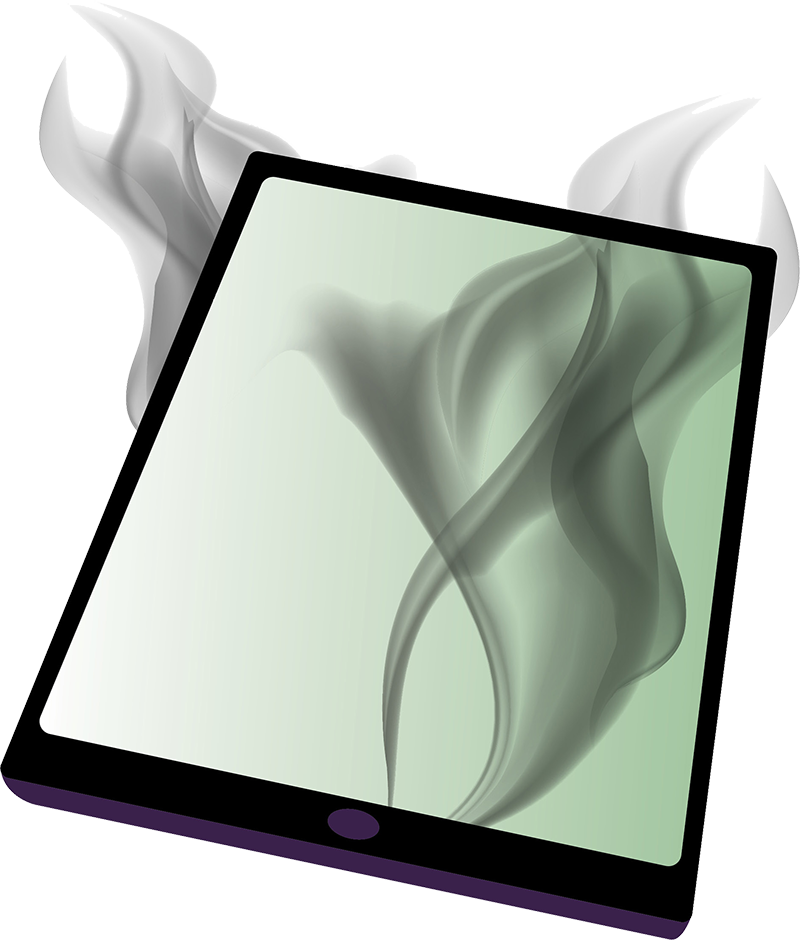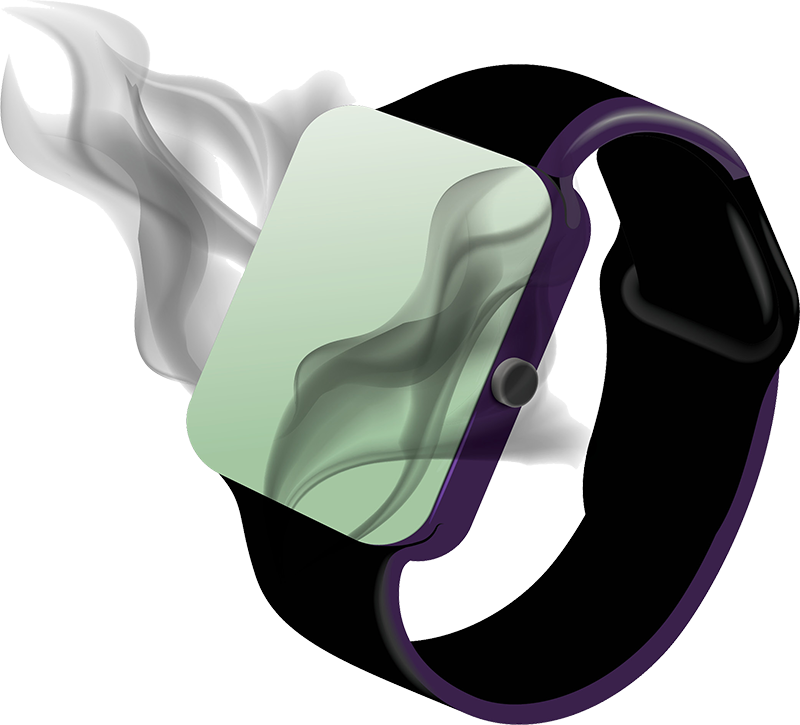Today, nearly every adult and many kids carry a cell phone, tablet or laptop. While their individual tasks differ, these devices have one thing in common: they’re all powered by rechargeable, lithium ion (Li-ion) batteries.
At any given time, there could be more than 1,000 Li-ion powered devices on board an airliner, while an international business jet might easily be flying with a few dozen. Despite their popularity, few people realize the dangers posed by Li-ion batteries.
Hazards run the gamut, from overheating, to emitting smoke, to bursting into flames or even exploding – spewing bits of white hot gel in all directions. In fact, a Li-ion fire can begin as a seemingly harmless overheat and erupt into a serious hazard in a matter of seconds.
FAA data shows the scope of the threat: In 2023, more than one Li-ion incident occurred aboard an aircraft each week. Specifically, the agency said there were 208 issues with lithium ion battery packs, 111 with e-cigarettes and vaping devices, 68 with cell phones and 60 with laptop computers. (The FAA doesn’t offer incident data by aircraft type.)
Thankfully, the data shows the chances of encountering an unstable mobile device aboard a business aircraft are small. But so is the possibility of a passenger experiencing a heart attack – yet many business aircraft carry defibrillators.
Thermal Runaway
The threat with lithium ion batteries is known as thermal runaway. When a Li-ion battery overheats due to some previous damage that creates a short circuit, the unit continues a catastrophic internal chain reaction until it melts or catches fire.
 While thermal runaway incidents are rare, the potential risks inherent in just one such occurrence aboard a business aircraft far outweigh the efforts needed to prevent it.
While thermal runaway incidents are rare, the potential risks inherent in just one such occurrence aboard a business aircraft far outweigh the efforts needed to prevent it.
“Most instances of thermal runaway are owner induced by dropping or substantially damaging their electronic device,” said John Cox, a retired airline pilot and founder of Safety Operating Systems. Another cause is the use of gray market charging devices. “You can buy one on the streets of New York for five bucks,” Cox said, “but the likelihood of that [charger] creating a battery overheat is significantly higher” than when using an OEM charger and cable.
A Li-ion fire can also emit smoke and fumes. Combustion by-products include “hydrogen fluoride, methyl carbonate, ethylene carbonate, carbon monoxide, carbon sulfide and phosphoryl fluoride,” according to toxicologist Dr. Richard Pleus. “There are two things to consider,” said Pleus. “First, the release of combustion by-products during a thermal runaway of the battery (and its container). Second, if a battery fire catches other things on fire, it will produce a lot of additional smoke and fumes. The combination makes poison. I’m concerned about being in an aircraft cabin with a fire causing these gases to reach levels that might incapacitate a person.”
Any white-hot bits of metal or gel from an exploding battery could cause third-degree burns to anyone they contact. Other fumes like carbon monoxide are odorless and invisible, yet lethal. “Then there are burned particles that could be inhaled,” Pleus said. Importantly, most modern aircraft ventilation systems can very quickly pump fresh air into the cabin to clear most fumes.
“If you have someone working in your aircraft’s cabin, for God’s sake, train them. Don’t simply buy a containment bag and equipment, and stick them in a drawer.”
Julie Kozma, Veteran Business Aviation Flight Attendant and Co-Chair of the NBAA Flight Attendant and Flight Technicians Committee
Just in Case
Once a device enters thermal runaway, the most important topic is how to fight the resulting fire to ensure nearby passengers are not injured. On an aircraft without a flight attendant, one of the two pilots will likely need to leave the flight deck to deal with the chaos.
 For large cabin airplanes, longtime flight attendant Julie Kozma said mitigation works a bit differently. “Why do you buckle a seatbelt when you get in a car? Just in case of an accident, right? We talk about a flight attendant on board being like a big seat belt. We’re the big just-in-case.”
For large cabin airplanes, longtime flight attendant Julie Kozma said mitigation works a bit differently. “Why do you buckle a seatbelt when you get in a car? Just in case of an accident, right? We talk about a flight attendant on board being like a big seat belt. We’re the big just-in-case.”
In fact, a flight attendant is usually the first line of defense during a cabin fire. Kozma moved from commercial to business aviation 19 years ago, spending the last 10 as the lead flight attendant on international trips aboard a Bombardier Global 6000. She’s also co-chair of the NBAA’s Flight Attendant and Flight Technicians Committee and is known to her colleagues as the “Lithium Battery Lady,” for her expertise.
“The data proves these fires are happening more regularly,” Kozma said. Also, there are many misconceptions about how to fight these fires, and a somewhat laissez faire attitude about Li-ion fires in general, she said. “Some flight crews believe the solution is to hit a burning device with a Halon extinguisher and stick it in that fire bag,” Kozma said.
Officially, that bag is referred to as a containment bag – or case – and they come in a variety of sizes. Kozma discovered in training “how quickly these [Li-ion] fires can get out of control” and that simply drowning an overheating device with Halon might kill the flames, but accomplish little else.
“FAA testing has determined that Halon fire extinguishers will extinguish an open flame, but they will not stop thermal runaway,” said Cox.
“Fighting this fire is all about cooling the batteries inside the device, ideally submerging it in liquid, maybe in a sink or a metal trash can,” Kozma said. “That’s the only chance there is to halt thermal runaway. Consider, too, where the water will come from. This effort will require more than just a bottle or two,” she added. “These fires can’t be smothered with ice, either.”
 Kozma said what worries her and other flight attendants most is that in order to deal with a fire, “We have to get within arm’s length of an unstable electronic device, many times with little or no protection. That’s not acceptable to us.”
Kozma said what worries her and other flight attendants most is that in order to deal with a fire, “We have to get within arm’s length of an unstable electronic device, many times with little or no protection. That’s not acceptable to us.”
Other worries include whether the airplane has a containment bag or case. Is the aircraft equipped with fireproof gloves to pick up even a cooling device? A face shield is also inexpensive protection against a unit spitting out white hot metal bits.
“The temperature of a unit in thermal runaway can spike upwards to 1,300 degrees Fahrenheit,” Kozma said. “Containment bags are important, but in a thermal runaway situation, those bags are really the last step, not the first. The unit needs to be cooled down first.” Kozma said there are other products available to douse the flames and cool an overheating device, like the specialized extinguishers produced by Tulsa, OK-based SpectrumFX.
Cox said fire prevention can begin by using OEM batteries that “typically have better internal protection circuitry to prevent an excessive rate of charge and maintain a stable voltage.”
Awareness of what might cause an event is important, too. “You see people walking around with cracked phone screens,” Cox said. “That’s definitive evidence that the unit and the battery have been subjected to shock, increasing the likelihood of encountering a thermal runaway.” Companies need not spend vast sums on containment systems. “The airlines are learning that medium priced containment systems are working quite well.”
A trained flight attendant is not a required crewmember on most Part 91 business aircraft. “But if there is an employee working in an aircraft cabin, there’s an implication that person is trained, and will be there to help you,” Kozma said. “So, if you have someone working in your aircraft’s cabin for God’s sake, train them. Don’t simply buy a containment bag and equipment and stick them in a drawer. Think about how you’d actually fight a lithium ion battery fire and train everyone for it regularly.”
Regular advice offered to pilots fits well here. “Train as you fly and fly as you train.”
Review NBAA’s resources for handling Li-ion batteries at nbaa.org/lithium-batteries



 International Business Aviation Council Ltd.
International Business Aviation Council Ltd.